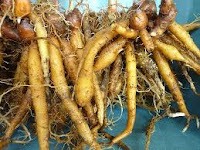SCURVY-GRASS, SPOONWORT, COCHLEARIA OFFICINALIS
Scurvy-grass, was as its name suggest used to combat a lack of vitamin C or scurvy and sailors needed this on their long sea voyages in the past just as the peasants of Europe needed vitamin C after long winters. This particular member of the Cochlearia genus grows close to the sea on cliffs and rocky ledges, and is a member of the Brassicaceae family of plants along with the cabbage, broccoli, cauliflower, brussel sprouts, kohlrabi,mustard, watercress, rocket, kale, mooli, radish, horseradish, and turnips.
This scurvy-grass is an Arctic native and lives in the colder parts of Europe, in particular Scandinavia, Denmark, Scotland and North America, where there is some concern about its status, as it is becoming rare. At one time it was an ingredient of “spring juice” a tonic made with this, the juice of Seville or bitter oranges, and the sap of brooklime or water pimpernel. This was especially effective at healing spongy and bleeding gums which are symptoms of scurvy.
It is best harvested in late spring or early summer and dried for later use, although in areas where it is rare, it should be left alone. These days we don’t suffer from scurvy in the Northern hemisphere.
 The name of the genus, Cochlearia comes from the Greek kokhliaron meaning spoon, hence the other English name for this plant, spoonwort, or spoon plant; koklos also means seashell, perhaps related to the fact that this particular scurvy-grass lives close to the sea.
The name of the genus, Cochlearia comes from the Greek kokhliaron meaning spoon, hence the other English name for this plant, spoonwort, or spoon plant; koklos also means seashell, perhaps related to the fact that this particular scurvy-grass lives close to the sea. Writing in the 17th century, Nicholas Culpeper acknowledges that there are several types of scurvy-grass but has this to say about Cochlearia officinalis:
“Government and virtues. The sea scurvy-grass is frequently used in scorbutic remedies along with the other, but wanting its fine volatile parts, it seems not so prevalent, but abounding more in saline, it may be used to good purpose as a diuretic.”
It used also to be an ingredient of scurvy-grass ale which was a popular tonic. It is said that the plant can be used as disinfectant. The infusion or tisane for scurvy was 2 ounces of the fresh herb, chopped, to one pint of boiling water, steeped for 10 to 15 minutes, strained and then drunk in small cupfuls a few times a day. However it is one of those plants that have fallen into disuse in modern times as scurvy is no longer as prevalent as it once was.


















